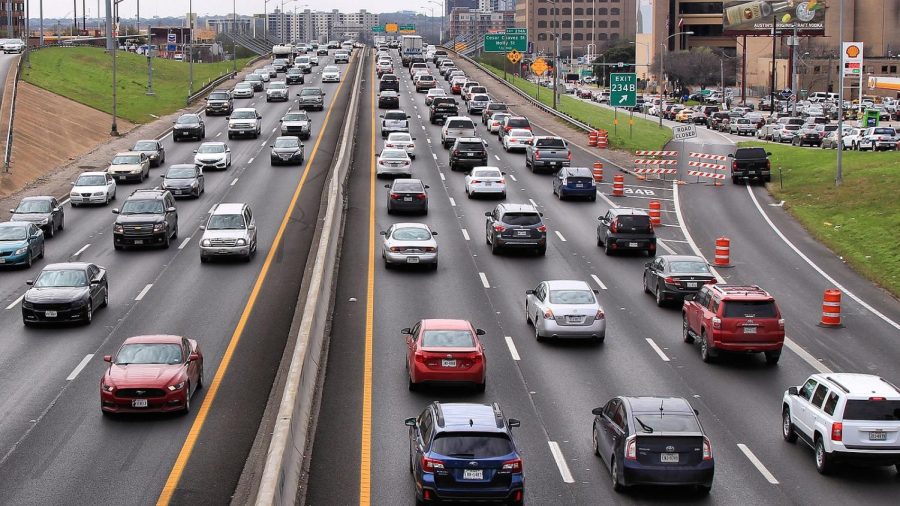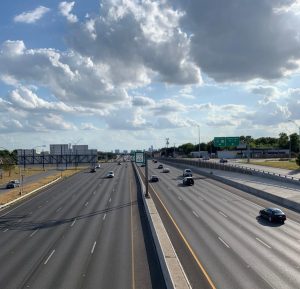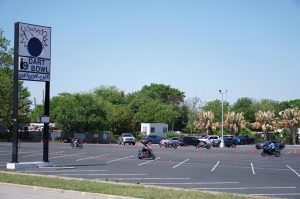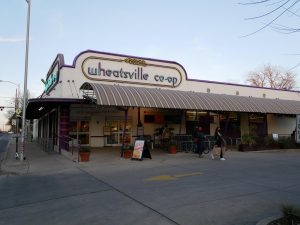Rethinking I-35
Local grassroots organization resists TxDot expansion, seeks solution to benefit locals, commuters, environment
Accessed on Wikipedia Commons. Reposted here under a creative commons license
TxDot’s proposed expansion plan would increase I-35 to a 20-lane highway in order to address traffic congestion. Independent organization Rethink35 believes that due to historic data, this plan would do more harm than good for Austin residents, commuters and the city environment at large.
December 1, 2022
In May 2019, the Texas Department of Transportation, or TxDot, revealed a plan to expand I-35 to a 20-lane highway in order to address long-standing traffic problems. The proposal costs $4.9 billion and is set to begin construction in 2025. The highway will be widened and tunnels will be built underneath to create more traffic space. TxDot believes more lanes are the solution to accommodate the millions of drivers moving to and traveling throughout central Texas.
Here’s the kicker: history reveals that highway expansions don’t work.
Adding lanes to major highways in U.S. cities has only increased congestion, like Houston’s Katy Freeway, which when expanded to 23 lanes increased evening commute traffic by 19 minutes. And highways can’t keep expanding forever. Eventually, something needs to change.
That’s where local grassroots organization Rethink35 comes in. Led by executive director Adam Greenfield, Rethink35 has three major tenets when it comes to the I-35 dilemma: resist, reroute and rethink.
Resist
The organization sees I-35, both the proposed expansion and current infrastructure, as inherently damaging to the city. Greenfield and other East Austin residents can attest to that.
“We’re just bathed 24 hours a day in this roar of interstate highway noise,” Greenfield said.
Junior Angelina Rowley has lived three blocks away from I-35 since she was in elementary school. Even though the highway has been minutes from her home her entire life, Rowley tends to stay away from it.
“I feel like the highway itself is already big enough,” she said. “I always try to avoid there.”
The primary goal of Rethink35 is to show TxDot that expansion is not what the people want. In outreach conducted by Rethink35, 68 percent of candidates for upcoming city elections oppose I-35 expansion, and 77 percent support studying alternatives, such as those presented by Rethink35 and similar organizations.
“We think that sends a very strong message that this isn’t something that the people of Austin or the region want,” Greenfield said.
The organization also believes that I-35 also serves as a perpetual symbol of segregation and gentrification. The highway remained a physical barrier between racial regions of the city, even after segregation was deemed unconstitutional. Not only will the expansion aggravate these issues, but businesses and homes will be demolished to make way for the new lanes.
“My preschool, it’s right there on the highway,” Rowley said. “And there’s a possibility that it might be destroyed, which would hurt because I have memories there, and I still know people that work there, so that’s a little sentimental, too.”
Rethink35 and other anti-expansion groups sued TxDot shortly after the expansion plan was unveiled. Despite the ongoing case, construction to expand south I-35 near Ben White Boulevard began on Nov. 15. Through social media, Rethink35 called for community support to protest the action.
Reroute
One of the biggest concerns from lawmakers and Austin residents about anti-expansion plans is where to divert the current traffic. Greenfield proposes the traffic relocates to preexisting highways outside of the city, like SH-130 and 183.
Hundreds of thousands of vehicles travel across I-35 every day, resulting in thousands of metric tons of emissions every year. Adding mileage and lanes to the highway would also result in further habitat loss and green space destruction.
Drivers from outside of Austin will find different routes and drivers from within the city can use other roads and transportation option
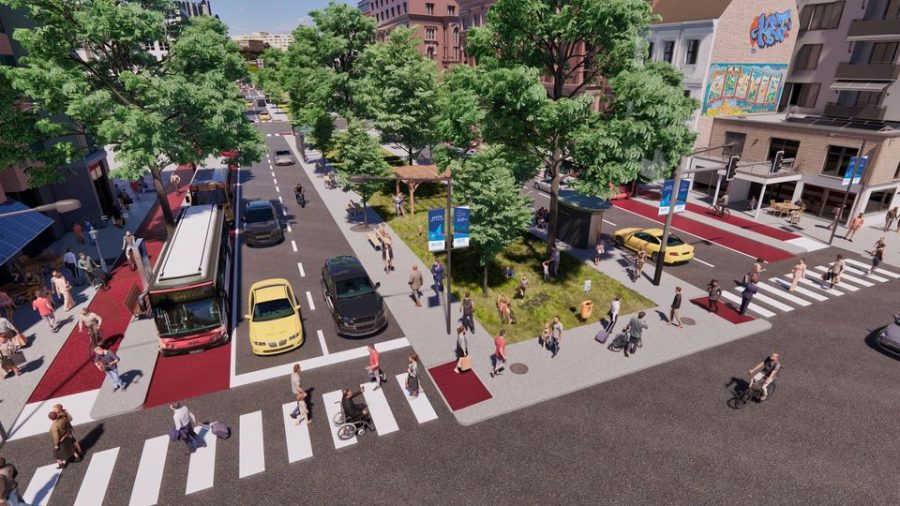
“That applies at least as much to people that don’t live near I-35 because they’re often farther away from their destinations downtown and so expansion is just going to make it harder for [all] people to get around,” Greenfield said.
Rethink35 proposes a boulevard that includes pedestrian, bus and train space, as well as locations for businesses and housing. Roads would still be present for low levels of traffic, but interstate travelers would no longer be able to use the center of Austin to get around. Machine traffic would be replaced by foot traffic and a sense of community and neighborhood space.
“I mean, everybody needs more housing,” Rowley said. “Everything [Rethink35] describes is something that we need, and I think that’s a great idea.”
Rethink
Ultimately, Rethink35’s plan involves ditching I-35 entirely.
“It’s been talked about for many years,” Greenfield said. “We were just the people who finally said, ‘Well we’re in an existential crisis with climate change; we keep doing these highway expansions, and they don’t work. They’re harmful, and this one will be particularly harmful.’ And we [decided] to stand up and push to make this happen.”
Precedent for urban boulevards like the one Rethink35 backs has already been set in cities like San Francisco in the 1980s and Portland in the ’70s. The San Francisco Embarcadaro freeway was deconstructed after an earthquake and was rebuilt as a waterfront roadway, which is now the second-most visited location in California after Disneyland. Portland’s replacement of its Harbor Drive freeway and transformation into Tom McCall Waterfront Park has also become a major tourist attraction.
“There’s so much precedent there, and I think the other thing is that the idea we’ve settled on makes so much sense to people,” Greenfield said “It’s just nonsensical to have an interstate highway going through the middle of your most valuable land.”
Other organizations such as Reconnect Austin and Our Future 35: Austin’s Cap and Stitch program have similar plans that entertain the idea of adapting to the I-35’s current structure in order to benefit East Austin neighborhoods. Reconnect Austin, similar to Rethink25, is an independent group, whereas Cap and Stitch is associated with TxDot.
TxDot set up Cap and Stitch as a “community-centered initiative,” so that citizens can have an official place in proposals on expansion. The goal of the program is to “co-create new public spaces over I-35” and to “reconnect East and West Austin physically, socially and economically after decades of divide.”
While these goals are in line with the general goals of Rethink35, adding “caps” (large decks over sunken areas of highway running north and south) and “stitches” (a bridge over a lowered area of the highway, running east and west) to the highway will do little to reduce the space that it takes up, and most importantly, the interstate will still be running through the center of Austin.
Greenfield encourages Austinites, especially young people, to become involved in the I-35 conversation.
“This is something that McCallum students can play a very significant role in,” Greenfield said. “When young people get involved with an issue and take it seriously and express their opinions on it, [it’s] noticed by decision makers because young people are the future, and they’re a sign of which way the wind is blowing.”
The core of the issue comes down to what the people of Austin want the center of their city to be, with or without I-35.
“We’ve given people hope,” Greenfield said. “Many people think that we can’t do something about this, and actually we really can. If every Austinite put in little bit of time we could win this. We just need to inspire people and give them hope that that we can do this.”



